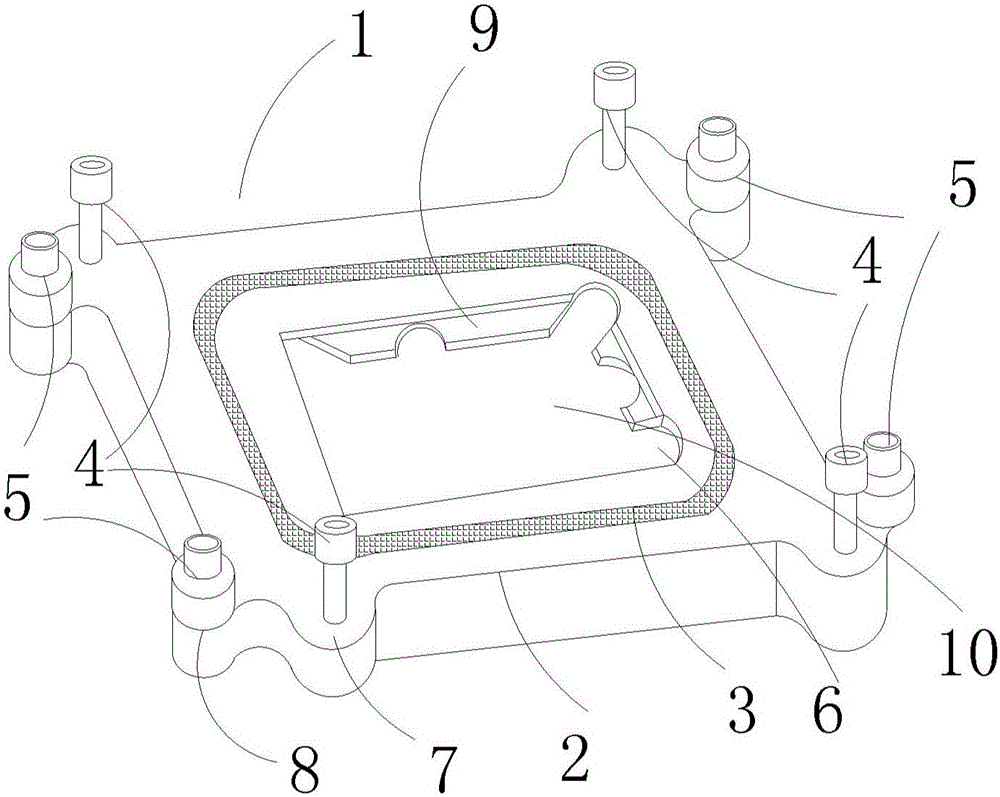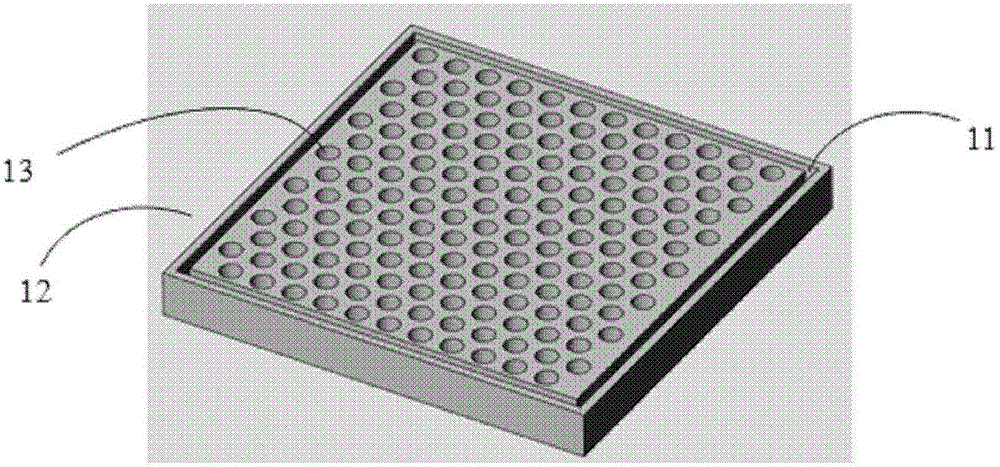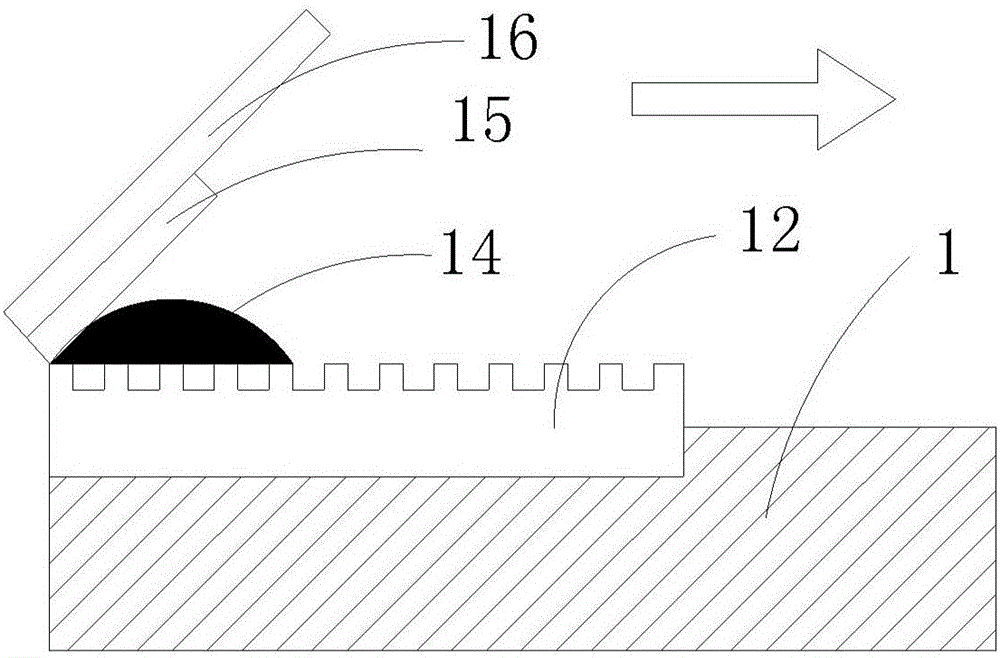Digital PCR (polymerase chain reaction) chip with silicon substrate arrays and micro-reaction pools and method for manufacturing digital PCR chip
A micro-reaction and chip technology, applied in the field of PCR, can solve problems such as the influence of thermal cycle time on PCR amplification efficiency, easy crosstalk in chip micropores, and difficulty in liquid entering the chip evenly, so as to ensure normal PCR amplification efficiency and reduce The effect of volatilization of microporous reaction reagents and shortening of thermal cycle time
- Summary
- Abstract
- Description
- Claims
- Application Information
AI Technical Summary
Problems solved by technology
Method used
Image
Examples
Embodiment Construction
[0027] A digital PCR chip with arrayed micro-reaction pools, the chip 12 is provided with arrayed micro-holes 13, and an upper cover 18 is placed above the chip 12.
[0028] The chip 12 is a silicon chip; the thickness of the chip 12 is 0.36-0.50 mm, preferably 0.38-0.39 mm; the upper cover 18 is transparent quartz glass.
[0029] The micropores 13 are arranged in a honeycomb shape, and the diameter of the micropores 13 is 20-200 microns, preferably 50-200 microns; the periphery of the micropores 13 has grooves 11 .
[0030] The chip 12 is placed in the chip slot 1, the chip slot 1 is provided with a groove 10, and the upper end surface of the heat conduction plate 2 is provided with an O-shaped sealing ring 3; the four corners of the heat conduction plate 1 are respectively provided with first flanges 7 and the second flange 8, a screw 4 is respectively arranged on the upper end surface of each first flange 7, and a heat insulating bushing 5 is respectively arranged on the up...
PUM
 Login to View More
Login to View More Abstract
Description
Claims
Application Information
 Login to View More
Login to View More - R&D
- Intellectual Property
- Life Sciences
- Materials
- Tech Scout
- Unparalleled Data Quality
- Higher Quality Content
- 60% Fewer Hallucinations
Browse by: Latest US Patents, China's latest patents, Technical Efficacy Thesaurus, Application Domain, Technology Topic, Popular Technical Reports.
© 2025 PatSnap. All rights reserved.Legal|Privacy policy|Modern Slavery Act Transparency Statement|Sitemap|About US| Contact US: help@patsnap.com



